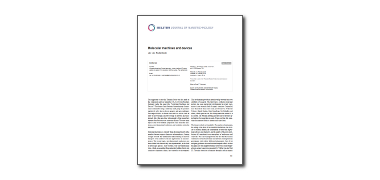Search results
Search for "carbon nitride" in Full Text gives 28 result(s) in Beilstein Journal of Nanotechnology.
Photocatalysis
Beilstein J. Nanotechnol. 2014, 5, 1071–1072, doi:10.3762/bjnano.5.119

- dots integrated with TiO2 nanotube arrays, and carbon nitride, have been explored to construct photocatalysts with enhanced performances. On the other hand, molecular catalysts have an advantage in design flexibility and structural tunability. A contribution based on the investigation of molecular
Biomolecule-assisted synthesis of carbon nitride and sulfur-doped carbon nitride heterojunction nanosheets: An efficient heterojunction photocatalyst for photoelectrochemical applications
Beilstein J. Nanotechnol. 2014, 5, 770–777, doi:10.3762/bjnano.5.89

- -doped graphitic carbon nitride (CNS) nanosheets. During the synthesis, sulfur could be introduced as a dopant into the lattice of carbon nitride (CN). Sulfur doping changed the texture as well as relative band positions of CN. By growing CN on preformed sulfur-doped CN nanosheets, composite CN/CNS
- : graphitic carbon nitride (g-C3N4); heterojunction; photoelectrochemical; photocatalysis; sulfur doping; Introduction Over the past few years, graphitic carbon nitride (CN) has attracted significant research attention in visible-light-driven photocatalysis because of its unique physical and chemical
- ]. Herein, we employ a biomolecule-assisted (L-cysteine) pyrolysis method to synthesize sulfur-doped carbon nitride (CNS) nanosheets, which can serve as the framework to grow CN to form an all CN-based heterojunction composite. The formation of CN/CNS heterojunctions significantly improves the
Nanotribology at high temperatures
Beilstein J. Nanotechnol. 2012, 3, 586–588, doi:10.3762/bjnano.3.68

- known to exhibit poor thermo-chemo-mechanical stability particularly against low carbon ferrous alloys [4] and at elevated temperatures [5]. It is surprising, but true, that diamond, the hardest material available (until the commercial realization of beta carbon nitride β-(C3N4) [6]), wears out rapidly













